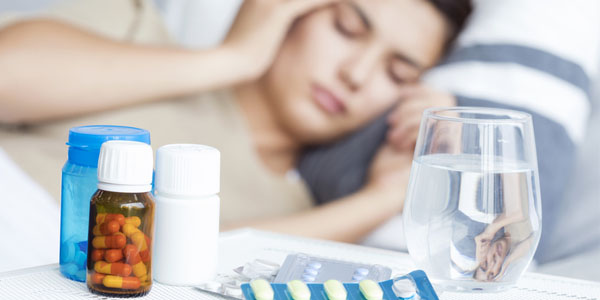The number of consumers suffering from sleeping disorders continues to grow, and quality sleep is a major issue for many Americans.
- According to the National Center for Sleep Disorders Research at the National Institutes of Health, about 30% to 40% of adults have some symptoms of insomnia within a given year, and about 10% to 15% of adults claim to have chronic insomnia.
- People over the age of 65 years are 1.5 times more likely to suffer from insomnia as compared to younger people.
- According to American Sleep Association, every year, approximately 40 million Americans, if not more, are afflicted by chronic long-term sleep disorders.
- Insomnia is considered a serious ailment, as it can lead to several other health-related problems, such as depression, as well as heart disease.
About 40 million people in the United States suffer from chronic long-term sleep disorders and an additional 20 million people experience occasional sleep problems, according to the National Institute of Neurological Disorders and Stroke. The National Sleep Foundation estimates that 43.0% of Americans between the ages of 13 and 64 rarely or never get a good night’s sleep on weeknights and 60% experience disruptions in their sleep every night or almost every night. A 2015 Drug Store News survey revealed that over 50.0% of consumers have used a sleep aid remedy in the last year; 84.0% said the remedy they used was an OTC rather than a prescription product.
With so much difficulty falling and staying asleep, consumers have many options to help them get a good night’s rest. Many use OTC sleep aids, combination OTC pain relievers, and sleep aids, natural and herbal remedies, sleep gadgets such as monitor tracking apps, or even prescription drugs to help them sleep. There are many concerns about the dependency and side effects of prescription sleep aids and therefore, many consumers turn to OTC or natural sleep aids when they have occasional sleeplessness. However, these market segments are growing at very different rates. For example, the pain and sleep aid combination brands in 2016 saw sales up 2.2% while OTC sleep aids like Unisom, ZzzQuil, and Simply Sleep expanded 3.4% in the same year. However, natural and herbal sleep aids that contain melatonin or valerian had sales up 11.0% in 2016, as per Kline’s Nonprescription Drugs USA and Natural OTCs studies.
Some examples of sleep devices include Neuro On Smart Sleep Mask Device (Inteliclinic), ActiGraph (ActiGraph), and Fatigue Science RediBand (Fatigue Science). While some of these devices promote better sleep, most of them are sleep monitoring devices that track sleep patterns. Neuro On Smart Sleep Mask Device (Inteliclinic) uses a light therapy that simulates natural sleeping situations. ActiGraph (ActiGraph) sleep monitoring smart watch helps track the sleep patterns of a person; it also provides various tips on the importance of healthy sleep. Fatigue Science RediBand (Fatigue Science) is a wristband that helps measure important sleep statistics. However, these devices are expensive compared to OTC sleep aids and are typically priced between $300 and $500. The growing popularity of fitness monitors and sleep monitors promotes sales of the category as consumers tracking their sleep patterns realize that they are not getting enough sleep. These consumers move to sleep aid products, driving the category’s sales.
In order to analyze and understand the dynamic sleep aids market, Kline is announcing Sleep Aids: U.S. Market Analysis and Opportunities, scheduled to be published in Q4 2018. This report will include a full analysis of OTC medicated sleep aids, natural sleep aids, pain + sleep combination brands, and sleep devices and will include consumer attitudes, usage, and perceptions research as well.
Kline’s research with consumers about their attitudes, usage, and perceptions of Natural OTCs, including natural sleep aids, is in progress and will be published in Q3 2018.

